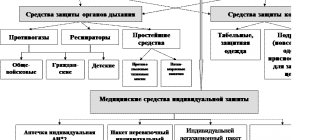Similar works
- Leadership in management
- Give the concept of leadership in management (Option 10)
- Management Test Option 10
- Principles of static organization. Organizational structures
- Criteria for choosing a distribution channel
- Marketing structures and building a marketing service
- Organizational management structures and principles for constructing organizational structures
- Building an organizational structure using the example of Indesit Company CJSC
- Organization as an object of management
- Human Resource Management
- Test on Strategic Management Option 7
- Organization as an object of management (Option 1)
- Management decisions and the concept of leadership (Option No. 6)
Blog
If we talk about leadership within the framework of management, then it seems to me that leadership is the ability to involve people in the sphere of one’s interests, using data of one’s character rather than one’s job description.
. That is, leadership is the ability to influence people with the help of one’s own personal qualities or skills that, in general, do not have a direct relationship to the position.
Surely a manager has a way of influencing employees? He has powers, and the so-called administrative law arising from the powers. Let's imagine that I am your employee, and you are my manager. You have the power to influence my behavior. I can call it administrative law. Yes, you have the right, I know that you are a leader, that you are not an impostor. According to legal and administrative law, you hold a position, and it seems that I must somehow correlate my desires and actions at work with some of your input. But leadership does not use administrative powers. Leadership is influence “without shoulder straps,” to put it metaphorically.
Leadership is more about character influence, that is, the ability to involve people in your area of interest. By default, we will not talk about our personal interests, but about the interests of the company, which I rely on, which I represent in this workplace, and I involve you in activities in the name of interests that I consider mine, and which, we will consider, are corporate. This is my version.
At the same time, the leader is characterized by certain behavior patterns. In particular, he considers himself responsible both for the business he represents (for example, corporate interests) and for the people who work under his management. And sometimes a leader extends his sphere of influence even beyond the legal territory.
Eg,
As a consultant, I have encountered this situation many times. There are several departments. Each department has its own head. These departments are connected by cross-processes, that is, for each other they are a supplier, a buyer (a cross-process is a process that passes through several departments). Tasks or instructions in requests received from a neighboring unit are carried out by department employees with greater zeal, with greater diligence and priority than instructions delegated by the immediate supervisor.
When I looked into this story, I discovered a rather expected thing: the head of this department had authority and leadership qualities in a rather weakly expressed form, but the head of the neighboring department had this same leadership. And if the head of a neighboring department was not satisfied with something in the activities of employees of a department not subordinate to him, then, without counting on the subordinate assistance of a colleague (to whom, according to the logic of the corporate structure, he should have turned), he turned directly to employees who were not subordinate to himself, and brought them into the proper motivational state.
From the point of view of subordination, this behavior is not at all correct. But from the point of view of solving the problem, that leader acted correctly. Why? He understood that turning to the leader would not achieve anything. A manager without authority with a high probability cannot influence his employees in any way, so he, without wasting time, influenced the employees himself (without particularly bothering whether he has the administrative right to do so). Figuratively speaking, his discontent was feared and feared more than the rights of the immediate leader with all his powers.
The leader considers himself responsible for the matter and for the sake of this he can violate administrative boundaries. I'm not saying I admire it, but it is a perfect example of how leadership, strength of character, trumps pure administrative authority.
In various sources, leadership is often contrasted with management. Leadership is often seen as the antithesis of management, as the antithesis of a leader, in modern times a leader is a leader, and a leader is an outdated word.
In my coordinate system, in regular management from Alexander Friedman, I do not agree with this and think differently. From my point of view, a leader is a profession. This is not a happy fate, not a cross and not Golgotha. A manager uses a discipline called management to manage a company or employees. Management is a discipline about management. And within the management discipline there are different groups of tools. Each group of tools is designed to solve specific problems.
I distinguish two directions within management:
1. Company management.
2. Employee management.
The higher a person is in the corporate hierarchy, the more time he spends managing the company and less time managing employees. But even the first person (no matter whether it is the owner, general or executive director), manages the company through the management of employees. This is when he gets down to business.
But the first person also has a number of other tasks that fall into the category of strategic marketing and strategic management. They are not directly related to employee management. These are developments of company activity models. When the first person begins implementation, he carries it out through employee management. Inside the section on employee management, I highlight three conventional toolboxes. Like a worker, he has one or two tool boxes at work.
A leader’s tools are usually called competencies. Since every profession has more than one tool, and probably the question “Which tool is the best?” pointless in any profession. There is no best in any profession, there are sets of tools.
Types of leaders in management
There are many definitions and approaches to leadership. For example, in his books, “Cultivate the Leader in You,” “Create a Leadership Team,” J. Maxwell perfectly shows how a leader differs from a manager; how to find, educate and rally such people around you. Or James Hunter, who in the book “The Servant, or the True Essence of Leadership Is Servant,” explains that a true leader is one who serves others.
In any case, no matter what definition of leadership is given, one thing is important: leaders are not born, they are made. And there is a very simple plan for developing leaders:
1. Recognize a potential leader
2. Invest in the development of a potential leader
3. Entrust responsibility to a potential leader
There is very good news: you are a leader! (after all, someone recognized and invested in you, entrusted or is ready to entrust responsibility for your group)
Leadership is a process and you will be pleasantly surprised by the changes that will happen to you and, especially, to your team. But before you formulate your team, it is important to understand that you are already on a team of successful people, on the team of your sponsorship leaders. Perhaps some of them will not be like you, your stereotypes, and they may also differ from each other. Bill Hybels gives a very interesting classification in his book Courageous Leadership:
Leader-carrier of visions
What defines a leader—a visionary—is that he has a clear picture of what the future should be. Such a leader shares a powerful vision and has a tireless enthusiasm for making it a reality.
Visionary leaders shamelessly pester anyone and everyone to join their vision. They talk about it, write about it, and are passionate about it themselves. They are idealistic, faith-filled leaders who believe with all their hearts that if a vision is repeated clearly enough and often enough, it will become reality. They are not easily disappointed or distracted. People saying that this is not real only adds fuel to the fire of their spirit. In response to the opposition, they become even stronger and raise their voices even louder. Put them in front of a crowd and they will capture it with their vision.
Vision leaders may or may not have a natural ability to build a team, to combine the talents of different people, to set goals, or to direct the process to achieve the vision. In order for their work to ultimately succeed, they must either find other people who can help them or work hard to develop skills that do not come naturally to them. But one thing is for sure: they carry the vision, share the vision, attract people to it, and die trying to realize it.
Guiding Leader
This leadership style is hardly covered in the literature, but is extremely important. The strength of such a leader lies in his supernatural, God-given ability to choose the right path for a team that finds itself at the crossroads of opportunities for further development.
A critical crossroads is the point at which the team begins to ask the questions: Should we stay the course or is it time for a fundamental change? Should we focus on growth or internal strengthening? Do we need to deviate fifteen degrees in some direction from our current course? Is it time to renew the staff or can we continue to dance with those with whom we came? Which direction should we go?
These are questions for the guiding leader and they are big. So large that they often paralyze other people. But the guiding leader is able to filter all options. He can carefully weigh the team's values, goals, strengths and weaknesses, resources, personnel, and readiness for change. With great wisdom, a guiding leader guides the team in the right direction.
This leadership style is critical because mistakes at key junctures can lead to a team's downfall.
Leader - strategist
God has given leaders of this style the ability to organize the step-by-step achievement of a vision. This gift of leadership allows a team to move purposefully toward achieving its mission.
Vision lights people up. It inspires people. It motivates people to action. But if people do not see progress towards achieving the vision, they will come to the conclusion that the person sharing the vision is just a dreamer blowing bubbles, and their fighting spirit will be lost.
Strategic leaders create a plan of action that everyone can buy into and participate in. Then they call on team members to get busy. They say, “Don't go off the rails. Do not be distructed. Just put one foot forward. Come to work and take the first step today. Tomorrow we will do the second, then the third, etc., stick to the plan and you will achieve your goal.” This is exactly what happens under the leadership of a strategic leader: an action plan gradually leads to the realization of a vision.
The strategic leader will also work to align subgroups of the team so that everyone's energy is focused on achieving the vision.
Leader - manager
According to some books on leadership, the term leader-manager is an oxymoron. Some leadership experts make a strict distinction between what managers do and what leaders do. It is often said that “leaders take the right steps while managers take the right steps.” Of course, there are some differences between managers and leaders. But when we talk about a managerial leadership style, we mean a leader who has the ability to organize people, processes and resources to achieve a goal.
The leader/manager's mouth waters at the thought of bringing order to chaos. He finds deep satisfaction in inspecting and fine-tuning a process, in motivating team members, in setting acceptable milestones along the way.
Leaders and managers rarely command the attention that those who give inspiring vision speeches, or make critical decisions, or create strategic plans do. But in the day-to-day world of action, someone must manage people and processes to move a team toward achieving its goals.
A leader is a motivator.
Leaders with a motivating style are the modern Vince Lombardi (Vince Lombardi is a legendary American football coach). They have the God-given ability to keep the fire going for their team. They constantly look around in search of drooping shoulders and dull eyes and immediately take up the task. To support and encourage those who need it most. They have a good understanding of who needs public recognition and who just needs a word of encouragement in private. They seem to know exactly when a person needs to be supported and pushed to further growth - a day off, praise or an opportunity to attend a seminar.
Some leaders view the motivational approach as a casual leadership style. But underestimating the importance of this style is a huge mistake. Even if the vision is not communicated at the highest level, even if there are occasional wrong turns at crossroads or management failures, working with such a leader is still a pleasure because he constantly lights up, brings out the best, rejoices in progress and exults in the team's achievements.
Most people are ready to follow such a leader to the grave!
Leaders and motivators never get upset or lash out at people when their overall mood and spirit drop. They see this as an opportunity to come up with new ways to lift the spirit of each team member.
The leader is a shepherd
The shepherd leader builds his team slowly, loves the team members very much, nurtures them tenderly, constantly supports them, listens carefully and always cares about them.
Such a leader creates in the team an atmosphere of such unity and cohesion, such close and deep relationships between team members that their hearts overflow with zeal to fulfill their mission.
While the visionary leader attracts people with the grace of the work, the shepherd leaders gather people together with little or no attention to it. In other words, shepherd leaders tend to shepherd and feed the team so diligently that when the question of business arises, his charges often say: “Well, the essence of the matter is not that important. As long as we can stay together and be with our shepherd, we will do it.”
A shepherd leader can have an incredibly grand vision. But what really matters to him is the attitude of the team.
Leaders must remember that in addition to the goal-driven people who are just waiting to be brought into the work by a visionary leader, there are also many who crave connection and who need to be accepted into a team where they will be fed and loved. Only then will they be ready to respond to the call to action. Without tender care, they will refrain from action, but when they are carefully looked after, they will happily and without hesitation pursue, perhaps, any goal.
The problem of leadership has aroused interest since ancient times. But the systematic, focused study of leadership began with. FTaylor (early 19th century). Early research aimed to identify the qualities or personal characteristics of effective leaders. According to the “big man” theory, the best leaders have a certain set of personal qualities that are common to all. Research has proven that there is no such set of personal qualities that all effective leaders have, because the effectiveness of leadership is situational in nature.
. Leadership is the ability of a person, through personal qualities, to influence the behavior of individuals and groups of workers in order to focus their efforts on achieving the goals of the organization [15, p464]
Force and coercion in leadership are often replaced by motivation and inspiration. As a result, influence is based on people's acceptance of the leader's demands without direct manifestation of power.
. The basis of leadership is a specific type of management relationship, or leadership type. Historically, this type arose much earlier than the “superior-subordinate” relationship, which was formed during the first industrial revolution. Most people recognize that leadership is identified with the human psychic relationship between the leader and his followers.
Scientific research has identified three main theoretical approaches to understanding leadership [7, p426-427]
1. The charismatic approach states that a person who has a certain set of personal qualities and is able to organize others to perform highly productive work can become a leader.
The attitude towards a charismatic leader is based on faith in him, reverence, and the activity of the person - the performer - is formed under the influence of the leader's charisma. Few people have such abilities. A charismatic leader represents the embodiment of the group’s values, which he places above his own interests and is able to transform his own values into general group interests.
Scientists have made separate attempts to determine the mental, physical and personality traits of different leaders, but they have not been able to formulate a specific set of qualities. At the same time, it was found that some, like bones, are mandatory for a leader: high mental abilities, broad public interests and maturity.
2. The situational approach determines that people become leaders not only because of their personality, but also due to various situational factors and the correspondence of the relationship between the leader and the situation. This theory shows that situational factors, which include the needs and personal qualities of subordinates, the nature of the task, needs, and the availability of information, can play a decisive role in effective leadership.
Research. FFidler identified three critical situations that affect the most effective leadership: the level of official authority, the structure of tasks, the relationship between the leader and group members. In situations that are very favorable or, conversely, extremely unfavorable, a task-oriented leader achieves much greater results than a people-oriented leader. In more moderately favorable situations, a leader who is people-oriented is more successful.
3. The synthetic approach considers leadership as a process of organizing interpersonal relationships in a group, and the leader as a subject of managing this process. Leadership according to this theory is considered as a joint group activity
Group development is determined by various criteria:
by content of activity (leader-inspirator, leader-executor, simultaneously leader-inspirator and leader-executor);
by the nature of the activity (universal, situational);
by leadership style (authoritarian, democratic, liberal)
The most common classification of leadership is by style.
. Management style is a set of characteristic methods, techniques and ways of carrying out management activities, forms of relationships and personal behavior of the manager towards subordinates, to achieve the goals of the organization
Leadership style has a significant impact on the effectiveness of the team and the organization as a whole. A specific management style is determined by objective and subjective factors: tasks, fun fu, size and structure of the team, individual qualities, experience of the manager, etc. The style is closely related to management methods and is mediated by the individual characteristics of the manager.
The general leadership style is shaped by government policy and the level of socio-economic development of the country. The individual style of a leader is formed on the basis of a general style, taking into account his knowledge, experience, and skills. The scientific leadership style emphasizes creative character, the unity of theory and practice, word and deed, which must have ideological, professional-organizational and ethical-psychological traits.
The ideological features of the leadership style include: conviction in the correctness of the choice of strategy, intransigence to shortcomings, transparency, democracy, vision of the future, the ability to criticize and bully subordinates, the fight against bureaucracy, adherence to principles, demands on oneself and the management apparatus, unity of word and deed, objectivity , providing workers with freedom of action that allows them to realize their professional and intellectual goals.
Professional and organizational features of management style include business qualities of managers and specialists, the main ones of which are the following: the ability to organize the work of the management apparatus; scientific approach to sp. Ravi; efficiency and enterprise, the ability to conduct organizational and administrative work; discipline, ability to control; clearly define the purpose of the management apparatus; correctly arrange personnel; effectively use various forms of labor motivation; implement the achievements of scientific and technological progress in the organization. The professional quality of a leader is required - the culture and structure of the language, the ability to highlight the main thing in the problem under discussion, etc.
There are authoritarian, democratic and liberal management styles
The authoritarian style of management is that the manager has sufficient power, imposes his will on his subordinates, resolves all issues single-handedly and does not take into account the opinions of specialists, using ad hominem methods of influence. This style is characterized by a high concentration of power in the hands of the leader, constant interference in the actions of lower-level managers, the imposition of a large number of rules, and brutal regulation.
Employees are generally indifferent or negative towards the decisions imposed by the manager; they happily accept his mistakes, finding that they are right in them. As a result, a bad moral and psychological climate is created in the organization, the ground for conflicts. The authoritarian style is best used when managing simple activities that focus on quantitative results.
. The democratic management style is characterized by a high degree of delegation of authority, active participation of employees in decision-making, creation of attractive conditions for the performance of official duties by subordinates, and, when achieved. UNI of success rewards the best. Under such conditions, the leader enjoys not only official, but also high personal authority among his subordinates, and a spirit of cooperation reigns in the organization. In the organization there is no strict control over subordinates, the manager cares more about the organization of production, the manager spends a lot of effort on creating an atmosphere of trust and openness, tries to teach subordinates to solve problems on their own. This management style is best used when managing complex activities where quality comes first.
. The liberal management style is that subordinates are given greater independence in work and decision-making, and the manager gives only general guidelines and sometimes controls the activities of performers. This style is characteristic mainly of scientific institutions and has limited distribution. The leader completely relies on his subordinates and adheres to a position of simple non-interference.
American explorer. Likert concluded that the leadership style will invariably be either work-oriented or people-oriented and proposed 4 basic leadership style systems [15, p494]
1. Exploitative-authoritarian, in which the manager imposes decisions on subordinates, motivation is carried out through threats, is characterized by a low level of development of communication processes, and all responsibility is assigned to the highest level of management.
2. Benevolent-authoritarian is characterized by the fact that management takes the form of lenient guardianship of personnel, motivation is carried out through rewards, insufficient communication and limited group action, and responsibility for the results of work is assigned to the managerial person.
3. Consultative-democratic is characterized by the fact that the manager shows partial trust in subordinates, allows the exchange of opinions, the staff feels responsible, important decisions are made at the highest level of management, there are vertical and horizontal communication links, and the volume of team work is characterized by an average.
4. Group participation is characterized by the fact that managers fully trust their subordinates, motivation is carried out through economic rewards, and personnel at all levels feel real responsibility for the goals of the organization.
The listed leadership styles do not cover all the diversity that is encountered in practical work. The activities of a leader are so diverse that any attempt at a unified classification of leadership styles fails.
American scientists. RBlake and. DMouton substantiated the concept of effective leadership according to two criteria: caring for people and caring for production. The concept includes five main leadership styles and is proposed in the form of a management “grid”, which reflects the two main areas of concern for managers (Figure 161) [15, p.4986.1) [15, p.498].
Management style is determined by the two above criteria:
Position 11 - seedy management, determined by minimal attention to the results of production and people;
Position 19 - entertainment management or holiday home, characterized by low attention to production results, and the main thing is good relations with subordinates;
Position 55 - organizational management, characterized by a balance between the needs of production and the needs of people, but no one uses their full potential;
Position 91 - task management or power - subordination, characterized by a high level of concern for production and a low level of concern for people, high production results are achieved, incoherently focusing on human relations;
Position 99 - group management, management with high efficiency due to the interaction of production tasks and people's needs, their understanding of problems with full confidence in the workers
Figure 161. Management grid. Blake-Mouton
Thus, depending on the degree of relationship with people and production, the manager can find himself at any point on the grid
An alternative to the grid in management. Blake-Mouton is a three-axis table. Reddin, which expands the two-dimensional grid due to the third factor - efficiency. The main element in the three-wing management table is the typology of eight management styles, emerging eight possible combinations of three factors: concern for people, concern for production, efficiency factor.
Russian scientist. LD. Kudryashov, based on the characteristics of the work of managers, identified eight leadership styles
Regulator - strives for complete regulation of the work of subordinates in all activities
Koletial - believes that effective management is ensured by the use of mainly collective forms of work
Sprinter - reacts very quickly to situational changes, wanting to achieve career growth
Objectivist - constantly refers to objective factors that prevent you from working better
. Red tape - subject to bureaucratic practices in work and decision making
. Maximalist - does not recognize small problems, but works mainly with large ones
. Troublesome - activity is characterized by a wide variety of problems, tries to participate in all matters, does not distinguish the main from the unimportant
. Organizer - focuses on organizational issues, ignoring the importance of other issues
Studying different leadership styles does not make it possible to determine the best one. The fact is that the style must meet the requirements of the situation in the team








